UP TO THE MINUTE
Maintenance, Restoration and Operations Excellence - PODCAST TRANSCRIPT
April 5, 2024 at 12:00 p.m.Editor's note: The following is the transcript of a live interview with Dylan Wheeler of SOPREMA. You can read the interview below, listen to the podcast or watch the webinar!
Heidi J Ellsworth: Hello everyone. Welcome to CoatingsTalk from CoatingsCoffeeShop. My name is Heidi Ellsworth and I am so happy to have you here today for this great webinar CoatingsTalk on maintenance, restoration and operations excellence. It is being brought to us by our friends at Suprema and we are very excited. This is such a hot topic on maintenance programs, when to restore and how to fit this all in within the operations of all of your building owners and customers.
So we are thrilled today to have Dylan Wheeler from SOPREMASOPREMA here to really bring us home, talk about this important MRO. Before we get started, and we're going to start here in just a second with some introductions, but I do want to remind everybody that this is being recorded and it will be available on demand within 24 hours. Also, we are going to have the chat open the entire time so get ready to have a great conversation today about MRO. So let's get started. So first of all, Dylan, welcome to CoatingsTalk. We're so happy to have you.
Dylan Wheeler: Well, thank you, Heidi. I just want to kick this thing off by saying thank you for having me. This is cool. We're talking about something that's very near and dear to my heart because this is all I've done my entire career. I'll introduce myself. I am the strategic account manager for SOPREMA US operations. I'm from Birmingham Alabama originally, born and raised. A little bit about myself and how I got into the industry. I was born in Birmingham, Alabama, went to Murray State, played division one baseball at Murray State and I graduated with a bachelor’s in science. And then I decided to pursue my baseball career after graduating school and ended up moving to Palm Springs, California where I started playing rookie ball. Eventually decided, very quickly actually after taking that path, that baseball wasn't going to be the career path for me. So I had a buddy who lived in Tampa, Florida at the time I was talking to and he was like, "Hey. Why don't you move to Tampa?"
And I was thinking to myself, I was like, "Well, I got to get a job anyways. Why not start in beautiful Florida, Tampa, Florida?" So I went down there and I had the opportunity that came up to work with a company called Coating & Foam Solutions, which is no longer in existence through acquisitions. Like a lot of the stories out there with some of these mom and pop coating companies, they've been bought up by the bigger people out there. So, I started working as a warehouse manager and swinging buckets around, wrapping orders, learning the ins and outs of roof coatings and epoxies, acrylics, even polyurethane spray foams and then eventually worked my way into a sales position as the Florida and the Caribbean manager for that company. And then throughout my career, my territory continued to get larger. So it went from Florida and the Caribbean to the Southeast and the Caribbean and then the Eastern US and then ended up becoming a US driven role for me, which is on the national side.
And I'm blessed and fortunate to have continued growth in my career and I've been doing it for 11 years now. And actually, you may be wondering how I came on board with SOPREMA. Well I was working for Tropical Roofing products. And through the acquisition back in 2022, I was the director of business development for Tropical Roofing products. And SOPREMA purchased us and SOPREMA said, "Hey Dylan, we've got an opportunity for you to come on board and help manage some of our larger accounts," and it's various accounts from distribution to potential retailers and things of that nature. So I ended up taking on that role and becoming a part of the SOPREMA family through that.
Heidi J Ellsworth: I love it. Your story, your journey, is like many of us in the industry, we find our way here and we really don't plan on it, but it's such a great industry. So great. Well let's get onto the topic. I do want to remind everyone that the chat is open. So please tell us where you're from, what kind of business you do, what's your commercial, residential and questions as we go along or comments or thoughts. We want to be very engaged, so let us know. Okay. So Dylan, let's start out with, I know this seems basic, but what is MRO?
Dylan Wheeler: Well, Heidi, I like to kind of break it down and define the words. So we're looking at MRO, which is maintenance and restoration operation. Well what is maintenance? Maintenance is the preservation of something through responsible care, whether that's a vehicle, a roof, any everyday item. And then you look at the restoration. What does restoration mean? Well it means returning something back to its original state or purpose. In our instance, we're looking at bringing something back to what it was originally put on for, which is keeping a building dry and lasting a long period of time. And that's kind of how I view it and then from our side, in the SOPREMA world and in the MRO world, we define it by products. So, there are certain products that do exactly what I just defined, they maintain, they restore and then operations is something that works on a day-to-day basis.
Heidi J Ellsworth: Yeah. And that's the thing is that we have to be thinking that way more about really that maintenance and it's an asset. Our roofing systems are an asset and sometimes that gets a little lost, especially what we've gone through over the last decade. Some of the roofs have gotten left behind and need to be brought back into shape and be able to use. So let's talk about that. What building owners are looking for in a maintenance program. I already saw we have a couple of folks on here from Elmer. Welcome. Thank you so much. From Las Vegas doing service manager. So what are the building owners looking for in a maintenance program?
Dylan Wheeler: Well, and we've got some bullet points listed up on the screen. And all building owners are looking for longevity, durability, sustainability, which is a hot topic right now and in the industry and not necessarily just in our industry, but just throughout the world. And then obviously a return on investment and most importantly, they want to feel comfortable about their investment. So the longevity side of things, with a lot of coating restoration systems out there, you could get up to a 20, sometimes even 25, year labor and material warranty. This gives the building owner the comfortable feel that they're looking for as far as, "Okay, I can trust this. This is an asset that I am investing in." And with most assets, you get a warranty. Well a lot of those warranties come with maintenance programs. So how are we going to make it last 20 years and even last longer than 20 years?
We have maintenance programs that we have in place for contractors to follow and a lot of the responsibility as well falls on the building owner, whether they choose to go with a maintenance program or not speaks volumes. The durability of maintenance is a big thing. Silicones, acrylics, coatings now have a very long and proven track record in the industry. It's not a fly-by-night roof system anymore like people would originally assumed it was. I think high-solid silicone had been invented back in the early 2000s, maybe 2000 itself and then there were silicone technologies prior to that.
And we have case studies that have been done on buildings as well. And sustainability is a huge thing as well. If we can maintain a roof for a long period of time before it needs to be re-roofed, why not? I mean, we're limiting the landfills. We have products now that are NSF P151 approved, which is for rainwater catchments, which is we're just making sure that we limit our carbon footprint for the generations to come behind us. And most importantly, there are return on investments, which if you go with a maintenance program and you take care of your roofs, on a coating system you're looking at 50% less than a re-roof.
And if you maintain that, you will continue to see an ROI by maintaining that roof because you're not having to recoat it or rip it off and start from scratch. Our goal is to, you have an existing roof system that's working, we repair that system if need be and then we put that roof system to sleep almost. So you think about the coating system that we're putting over the top of it as a blanket and then that roof can finally rest and the coating does the work for it.
Heidi J Ellsworth: So, I think this is so interesting when you talk about sustainability because really sustainability is part of ROI, it's part of durability, it's longevity, it's the whole nine yards. And Dylan, my mind always goes to marketing, sales and marketing. And so how strong is that for a building owner who maybe has tenants who is trying to, especially when you're thinking about more residential and they want people to know the roofing system's not going into landfills, that it's being maintained, that they don't have to worry about their treasures because the roof is being looked over. I mean, to me that seems like a huge marketing opportunity for the building owners.
Dylan Wheeler: Yeah. 100%. And for example, we have done a lot of business with some of the larger corporations out there and some of these larger corporations, they have to follow protocols on, "Okay. What am I doing to limit my footprint?" And they have to report up through their chain, "Okay. Well here's what we're doing," and if they just go all willy-nilly and start from scratch, ripping things off, throwing things away, it can be perceived as irresponsible on their end. So yeah. I mean to your point, from a marketing standpoint, not just us, but some of these larger corporations that own all these buildings throughout the world, they actually use it as a marketing tool as well from their end because they are showing people that, "Hey. We are conscious of what's going on. We know how important sustainability is and here's what we've done to limit the carbon footprint and to show that we care about the environment." And it's really cool whenever you see some of these larger corporations getting on that same train and really working together for the same task.
Heidi J Ellsworth: Yeah. It really is. And you can totally see it coming around in the industry. And I think, as we're talking about it too, that's really where, for the contractors, how important is a service and repair program? Well it's pretty dang important. So what are you seeing there?
Dylan Wheeler: So, whenever we talk about a service program from a contractor standpoint, I think this is huge. It is not just for the contractors that are already in existence, but if there's a contractor that wants to get into the game, in my opinion, the best way to do it is to start with service, right? You're looking at low overhead, you need to build a client base. So what's the best way to do it? You go out there and you find building owners that need help that may not have warranties in place on said building. Well not everybody's willing to write you a million dollar check upfront to do your entire roof. So, you get in there, you gain trust with the building owner and you say, "Look, okay. You're having these issues. Let me take care of these issues for you," and that may be going out there and servicing a building for four times a year, once a quarter, biannually.
And then you gain that building owner's trust and that hits on one of the bullet points that's on the screen is the relationships. So then you begin to build the relationships and then you build the trust and then that building owner then says, "Well this person's been servicing my roof for the last 10 years. I need to do something with my roof." You're the first person on their mind. So, they pick up the phone, they call you and then that's when the big payday comes for the contractor. So I think it's a good way to enter into the industry. And then obviously for the contractors that are already out there, a service program is also meant to limit the liability of a contractor and of a manufacturer. Our goal in the end, and it's a joint goal between the contractor and the manufacturers out there, is to take care of the building.
That's the end customer. We are providing a service; we are providing a product and we want to make sure that our product and our service is doing exactly as what we're promoting it to do. So one of the best ways of doing that is to have a preventative maintenance program in place just to make sure that we're limiting any liability that we may have because if for some reason we cut corners from a manufacturing standpoint and/or contractor standpoint, it could end up being catastrophic for the building owner because we go back to talking about assets. Well the roof is an asset, but everything inside of that roof is also an asset.
So if there are catastrophic leaks that end up coming through there, you could be looking at destroying some kind of an operation or whatever may be inside of that building. So it's important to have those programs in place to make sure that we're not missing anything as that roof ages over time. And in my opinion, it's also a good way to continue to maintain the relationship for that contractor as well. You keep that relationship in place, and again, the building owner will come back to you and say, "Hey. I'd like to re-up my warranty. What do I have to do?" And then you as the contractor give them that solution.
Heidi J Ellsworth: And you don't know how many other facilities they have or how many other buildings that they're watching out for or are in charge of.
Dylan Wheeler: That's right. Yep. Yep. And it could be a maintenance group that manages that property that you're dealing with who may have 10, 15, 100 buildings throughout the US and they're like, "Hey. You did a fantastic job for me. I want you to look at these for me." And you just continue to grow that way.
Heidi J Ellsworth: And I love the last bullet point when we talk about initiative because it really does show, when your salespeople are able to sit in with a customer, they want to get in, either they have a new roof or they just restored their roof and to be able to say, "Hey. We will be here for you and we will take care of this and this is all part of the program. So get a preventative program, work through this." To me, if I have that in my life when someone comes and says, "Hey, I'm going to take care of things for you. Thank you for being a great customer," that goes a long ways.
Dylan Wheeler: Yes, it does. Yep. It shows you're not an afterthought. It shows the customer that you truly, truly care about them and what better way to do it is to say, "I'll come out there and I'll make minor repairs for you," because they're used to people soliciting for the whole bag, they want the whole business, whereas you're like, "No. I'll take care of the small stuff." You don't need to do that right now. And then you build comfort and trust through the customer that way and I think it's great and you said it very well.
Heidi J Ellsworth: I always thought it's brilliant to have that service repair. And as we're talking about this, when you really are thinking about going out, sitting down with that building owner, sitting down with the facility manager, whoever it may be, there's now today this great conversation that really wasn't there before. It was always, before coatings really came in, it was all about, "We're going to tear it off, put it in the landfill and re-roof." Now that conversation is so different today for contractors. So let's talk about that.
Dylan Wheeler: Yeah. So a question that we get a lot, especially whenever we get some of your conventional roofers that are starting to adopt the coatings idea, and not even just the idea, but the business opportunity that coatings has, is when do I know to coat it or walk away from it? And it always boils down to is there moisture present? Is there damage to the roof? And is there age? What's the age of the roof, right? Well age can be a determining factor and cannot be a determining factor in some solutions. And it goes back to maintenance. If that roof is 45 years old and been properly maintained, a lot of the times you're going to find a good candidate because you're going to have limited water intrusion and water and moisture in the building itself is probably the number one factor of determining whether or not that roof is salvageable.
Once water gets into insulation, it just begins to migrate. And I like to go back to what I call the 20% rule, which once that roof becomes more than 20% saturated or 20% of that roof has to be replaced or repaired, then you've now eliminated the economical benefits of a roof coating. So that's when you're like, "Okay. Well maybe now we should start looking at a re-roof." And another determining factor, you get up there and you see photos on the internet of people walking roofs and you'll have vegetation growing out of the top of roofs. They look like gardens, but if something is able to support life on top of your roof, there's plenty of water that's sustaining that life. So you've got to understand that, "All right. There's definitely moisture intrusion here." And you take a look at, "Well I need to core this roof, I need to do infrared scans and I need to determine exactly how much moisture is in this roof."
And I always say, if it exceeds that 20% of the roof is saturated and wet, that you pass on and then you start going to, "All right. Well we need to look at a re-roof option versus a restoration option," because coatings are meant to be economical and an option for building owners. Well if you're going out there and you're charging somebody the same amount to re-roof it verse coat it, then you start teeter that line. It's like, "All right. This is when the building owner should really start looking at it." So I've always had that threshold throughout my entire career that 20% of the roof is my threshold. If we exceed that, then we start looking at a re-roof as an option.
Heidi J Ellsworth: And for the contractors who are out there, of course most of them are probably offering multiple systems much like SOPREMA does.
Dylan Wheeler: Yes.
Heidi J Ellsworth: So, you have these options to really be able to, and again, I know I keep coming back to this, but again, from a marketing standpoint from the contractor to the building owner, how great when you can offer a full realm and be able to really take care of them for exactly what they need.
Dylan Wheeler: Exactly. Yeah. And you can go in there and show them the big re-roof and a bit of a coating if that roof is in fact a candidate and you could be like, "I can save you this much money while going back to sustainability, while helping out on the sustainability side and I can give you the same exact warranty as if you were to re-roof it," and you just saved that building owner a substantial amount of money. And not to mention, the contractor should be happy as well because they're going to be able to get on and off that roof substantially faster than having to rip it off and then start from scratch.
Heidi J Ellsworth: Yeah. And when you have tenants, that can make a big difference too.
Dylan Wheeler: Oh, yeah. Your intrusion as far as having to rip that stuff down, you're talking about shutting down day-to-day operations inside of that building all together, whereas if you can get up there and you can coat it, they can go on with their day-to-day activities and not even know you're up there fixing their roof.
Heidi J Ellsworth: Right. Right. It's amazing. So let's talk about that a little bit because as the contractors are going up on the roof and they're checking it out, of course they're going to see every kind of roof out there, all kinds of situations. So maybe let's talk through restoring these different types of roofs and kind of what it takes and what people should be aware of.
Dylan Wheeler: Right. So in our industry, there are several roof systems, right? We've narrowed it down here to some of your main systems. You've got your built up and your asphaltic roofs, which this can mean a lot of different things. This can be tar and gravel. This can be coal tar pitch. This can be smooth modified. This can be granulated modified. And there is a different remedy for every single one of those roofs out there. You start talking about a tar and gravel. A lot of the times those aren't suited and aren't the best fit for a restoration process unless you're looking at either putting down a form of emulsion, you flood coat it with an emulsion and then you reinforce it with fabric and then you can come back and put our 996 bleed trap over it and then you can put our Eterna-Sil 924 high solid silicone over it.
That would really be the only option in that case unless you wanted to go a polyurethane spray foam over that particular roof substrate and then you could coat it with silicone and/or acrylic, but then you start talking about cost and there are different benefits to all of the systems. So you really need to weigh your pros and cons, depending on your roof substrate. A lot of those type of roofs may be equipped more for a modified system or a recover of some type. Now when you get into modified bitumen, modified bitumen smooth or granulated are fantastic candidates for roof coats. You're looking at one of the best roof systems with a modified bitumen that if it's up kept and we always go back to clean, dry and coat, those are your three main points whenever you're looking at a roof system.
And if you've got a modified bitumen that is sound and dry, you've got a fantastic candidate for a coating restoration. And what we would do is in those particular instance, we would pressure clean it with our 652 roof wash to get rid of any dirt or loose granules that may be on that roof and then we would let it dry and then we would come back and we would apply a base coat of 996 bleed trap. What that does is it keeps oils from the asphalt product from migrating through our pretty white coating that we want up there that has reflectivity that the building owner may be doing this for. They want the reflectivity. They want maybe cooler ambient temperature on the inside of their building. So it's important to have that put down and then I call it tobacco staining. It will yellow, that white coating will.
And then after our 996 bleed trap, we would come in and we would put down our 9,400 on any seams and any penetrations that we may have on that roof. And what that does is it adds an extra layer of silicone and we're all looking at dry mill thickness in these particular instances. It's like, where is this roof most likely going to leak if it leaks? Well, you always look at your seams, you look at your penetrations and you look at your edges. So we come back and we put an extra reinforcement of silicone down and then after all of your prep work is done, you can come back and you can put up to three gallons a square of Eterna-Sil 924 high solid silicone over the top of it and/or our acrylic systems, right? We've got an acrylic butter grade that's for seams and penetrations as well as our top coat. So that's how you would treat a built-up roof. I don't know if anybody has any questions on that particular roof system. I mean, feel free to ask.
Heidi J Ellsworth: We have the chat open.
Dylan Wheeler: Yep. And then you move on to your single plies. The most important thing with a single ply is adhesion, right? You've got plasticizers in some of these TPO and PVC roofs up that if it's not aged or it hasn't been degragated over a certain time period, plasticizers are constantly migrating out of those type of roof systems, which can cause adhesion to be an issue. And even with your EPDM roofs, you've got carbon black up on there, which can cause adhesion as well. So it's always extremely important before you move forward and decide that this is a candidate or not by doing an adhesion test. And adhesion test is pretty much you'll take a 16-inch strip of polyester fabric by one inch wide and you will encapsulate that and leave a portion of it exposed and leave it to three to five days and then you could tell what your actual adhesion to the substrate is prior to coating it.
And then if the adhesion comes back great, you treat it very similar to a modified bitumen minus the bleed trap. There's no need for a bleed trap. A cool thing about our high-solid silicone, the 924, is it's a direct bond. So for example, there's no need for a TPO primer or a PVC primer or even on EPDMs, a lot of people specify that it needs to be primed with a corrosive rinse wash. Our product has Miami-Dade approvals over the top of EPDM with just a commercial grade soap like our 652 roof wash. So you've eliminated a material, you've eliminated a labor step, which from a sustainability standpoint, if you're talking about a corrosive rinse wash, now you have to collect all of that and then dispose of it properly. You can't just flush it down the storm drain and call it good.
And then you move on to our metal roof systems and metal you're going to treat very similar to a single ply type of system. There are two type of metals that we're typically running into. It's going to be your standing seam and your R-Panel metal roofs. One you have to treat just your horizontal. So that would be your standing seam is where you would treat your horizontal seams with 9,400 and then you could come back and coat it after you've done your horizontal seams and your fastener heads and then you could coat it with 924 high solid silicone.
If you've got an R-Panel, then now you've added vertical seams to the equation. So you have to make sure that you've prepped all your vertical seams and your horizontal seams and your fastener heads and then you would come back and then you would coat it based off of the type of warranty that you're looking for. Heidi, I mean, are there any questions for those three before I move on to the ballasted side of things because the ballasted-
Heidi J Ellsworth: Not so far.
Dylan Wheeler: I've got my opinion on ballasted roofs.
Heidi J Ellsworth: I know. I'm kind of interested. I've been waiting for the ballasted part because I think that's really difficult.
Dylan Wheeler: That's a difficult system. And in my opinion, and you get into places like the Midwest. For some reason you run across ballasted roofs all the time. And there are differing opinions on ballasted roofs in the industry. And in my opinion, if the building owner has the ability or has the budget to re-roof a ballasted roof, that would be the route I would steer them in. However, there have been instances to where we have helped out building owners with ballasted roofs. Now we go through a substantial vetting process of, "Okay. How long has this ballasted roof been up here? What type of insulation is under the ballasted roof? What is the decking of the ballasted roof?" Because we have to determine if we can properly fasten this ballasted roof back down with fasteners, almost like you're mechanically adhering an EPDM roof down to the original roof substrate.
And you got to have a sound deck in order to do that because then you start looking at, "Wow. There's wind uplift. There's all these different things that come into play with ballast." You think about it, it's a loose laid EPDM that people have thrown rock over the top of it. It could be river rock. It could be gravel. It changes from place to place. So we have done it and we've done it successfully in a lot of instances, but it's not without proper, we walk the roof multiple times, we determine, "Okay. Yes, we have the proper insulation board underneath it. We have the proper decking that we can run a fastener off of," and we always refer back to the single ply manufacturer on fastening patterns.
We do not go in there and recommend our own fastening patterns over the top of an EPDM. We always say, "Hey, why don't you contact the manufacturer of that particular roof and get their fastening patterns and their recommended fasteners for this type roof system?" So we teeter and we tread very lightly whenever we get a ballasted roof. But they're interesting and there's a lot of them out there surprisingly, especially, like I said, that run along the Mississippi. I've never seen so many that run along that Mississippi River because a lot of the times people just scoop that river rock out of the river and then they would just throw it up on top of the roof and that would be their cheap, affordable way and boom, they're done with it.
Heidi J Ellsworth: You know it's funny because we've seen, or just through the years, I've seen a lot of them through California too.
Dylan Wheeler: Yep.
Heidi J Ellsworth: And it's like you just have these little hot spots of ballasted roofs and I think that has been a challenge for restoration.
Dylan Wheeler: Yes.
Heidi J Ellsworth: Like really how does that work and is it even a good candidate? And I love how you're talking first of all about the 20% rule and then going through these systems, you have to be sure it's a good candidate because you don't want moisture or problems underneath that coating.
Dylan Wheeler: Yeah. 100%. We don't want to do something that we know is not going to work.
Heidi J Ellsworth: Right.
Dylan Wheeler: And there are instances, and as you peel back the onion by talking to the facility manager or the building owner, they may tell you, "Look, I don't have the budget right now for a re-roof, but if you could get me through for an additional year to two years when that budget will become available," that's when you're like, "Okay. Well here's what we can do." So not just every roof, but every building owner, every facility manager has its own story, has its own need and you really got to get down to the nuts and the bolts of why they're even considering this as an option. And then we can say, "All right. Here's what we can do," or, "No. This would just be slapping a Band-Aid on a bullet hole," if you will and you're just like, "I can't help you in this particular situation," because the last thing we want to do is ask them to spend money on something we know will not work.
Heidi J Ellsworth: Right.
Dylan Wheeler: And it's a lot deeper than, "Hey, I can do this," or "I can't do this." You really got to ask the right questions when you're dealing with people.
Heidi J Ellsworth: Yeah. No. And asking questions and understanding, I think every contractor out there knows, that's the most important thing, knowing what you're getting into, understanding the roof and the owners and the goals. So as we're kind looking at that, moving on more to a little bit the operation side of it because maintenance, restoration, operations, here we are.
Dylan Wheeler: Right.
Heidi J Ellsworth: But liquid applied products to include in that MRO program, kind of talk about the different types of products that are out there and solutions for the different stages.
Dylan Wheeler: Right. So I said earlier on when we were talking that we define MRO based off of product categories and the product categories you see on the screen are some of the products that we have under this SOPREMA umbrella that fit under the maintenance, restoration, operation. We've got commercial grade asphalts, which can be defined as modified mastic, some of your traditional bull type products that are used for repair on your built-up roofs. And then you go into your emulsions, your water-based emulsions and your asphalt emulsions that are used to even blood coat or re-asphalt some of these systems that are out there to prolong the life of them. You want to re-emulsify them if you'll. And that product has been around, and asphalts have been around, for a century if not longer. I mean, I couldn't even tell you how long they've been around, but we really, really have a need for those.
And that's not just from a commercial grade standpoint, that's from a shingle standpoint. Whenever you have shingle issues, people would go up there and they'll make patches on their shingles on their residential homes. So there's a substantial need for that from a maintenance standpoint, both commercial and residential. You move on to your acrylics and each one of these products serves a different purpose. An acrylic is a water-based coating that is self-sacrificial, right?
Heidi J Ellsworth: Yeah.
Dylan Wheeler: It doesn't withhold ponding water very well. It stays clean because it is self-sacrificial. So every time it rains, you lose a little bit of that acrylic over the years. So one of the big differences between an acrylic and a silicone is you lose about one mil per year of an acrylic versus silicone, you're about one mil every 10 years is how it's broken down. So they're very well suited for your steep slopes, any good pitched roofs, metal is a great candidate for acrylic roofing systems whenever you're restoring those and it's got a good slope, it's anti-slip for the most part and water-based acrylics can be great from a cost standpoint as well. The cost of an acrylic is less than a silicone. However, you got to look at, you're doing multiple coats, whereas a silicone, it's a one-coat system for the most part.
And silicones are great for your low slopes, right? Withstands ponding water. It's inorganic, meaning that it's not going to promote any bacteria, mold or algae growth. It's not going to feed on the actual roof coating itself. It may grow, but it will grow on top of it. You get along the Gulf coast, you'll see a lot of red algae, but it's not ingrained in the roof system. It doesn't actually feed off of the roof system. So you could come up there and you can pressure clean those particular type of roof systems and it will go back to brand new. So-
Heidi J Ellsworth: That's part of your maintenance program.
Dylan Wheeler: Part of the maintenance program, right. You go back to a pretty white roof and you restore it back to its original state. And silicone Sprite, I mean, the longevity of silicone is fantastic. I mean, it can be used on steep slope. It can be used on low slope. There are just different variations between when you would use it, when you wouldn't use it. And again, all these things go back to what the building owner's story is, what they're looking for, what their plan is for the building and then we can help guide them in the direction that's going to make them most happy while providing them with a dry roof over their head, knowing that all of their assets, both on the roof and under the roof are protected.
And then you go into your sealants. Under the SOPREMA family, we have Chem Link, which is a brand of ours, which we offer up as a maintenance and repair product. And sealants are great in the fact that it can be used on a roof for all weather purposes. To go up there and fix fastener heads on metal roofs or adhere a substrate back together. Sealants are great in the fact of I may have, and I've been on roofs all my life and I've found everything from bow and arrows or an arrow in the top of a roof and even bullet holes where a sealant, you may only need a small tube to go up there and patch something and you don't need to buy a five gallon pail or a two gallon pail. It's just good to have a multi-purpose sealant in the back of your repair trucks at all times because you can go up there and touch up small areas without wasting an entire bucket of product.
So sealants fall into this category as well and all these things really, and they can all work together as a system. I talked about how to restore different roof substrates earlier on and they can all work together as standalone separately as maintenance products too. So they're all different chemistries and they all serve different purposes. Again, it all goes back to the building owner and what we can do for them to give them the end result they're looking for.
Heidi J Ellsworth: And you may need to have all of them in your either truck or warehouse.
Dylan Wheeler: Exactly.
Heidi J Ellsworth: All the different jobs that are out there.
Dylan Wheeler: Yeah. 100%.
Heidi J Ellsworth: Yeah. So Dylan, we have a question, and thank you so much. It's from Texas Elite Roofing. What is the PSI that would be safe for the cleansing of the roof surface and type of tip?
Dylan Wheeler: So typically, and the tip will vary, right? I mean for pressure washers, they'll make different tips for different pressures. I would say, and it depends on your roof substrate, right? You don't want to go up there blasting 5,000 PSI over a silicone, which tends to be a little softer or it may be a degragated single ply, but typically anywhere from 2,000 to 3,000 is a safe PSI range for your pressure washing. And then you get into some scenarios to where you may need high pressure. If you get up there and you've got an aluminum coating on a metal roof that is just flaking all to pieces and your goal is to get as much of that off as possible, you may want to go a little bit higher on your pressure, but I would never exceed anything more than 4,000 PSI coming out of a gun.
And then they also have different types of pressure washing. You've got the hydro bags out there that have the brush that scrub while it's pushing the pressure of the water out as well so you can kind of hit it and it's a double whammy, but to answer the question, I'd say a safe range, always start lower than you needed and then you can adjust based off of how much dirt is actually coming off of that roof.
Heidi J Ellsworth: Excellent. Excellent. Thank you so much for that question. The chat is open everyone. Please ask questions. We're going to do something a little bit different right now, which is, I've been really excited about this and we haven't really done this before on a webinar, but we're going to actually go over and have Dylan share with us some case studies of how MRO has worked out in the field. I think this is really cool. So, keep the questions coming, keep them coming in and Dylan, talk to us about Mandalay Bay.
Dylan Wheeler: Yeah. So Mandalay Bay was a unique, I mean, you can look at the building and you just say, "Wow. What a view. What a property." This particular instance was a modified bitumen that had a substantial amount of leaks in it and it was actively leaking and there was a lot, and like a lot of condo complexes, there's heavy foot traffic. Everybody's got AC units on top of the roof and people need to have access to those AC units and make sure that they maintain and they do preventative maintenance on their AC units.
So with that being said, it was a twin high-rise building. We ended up restoring this particular roof with a 20-year labor material warranty. What we did is we came in and we pressure washed it with our 652 roof wash, made sure that we removed any loose granules that may have been on that roof, anything, any dirt, any loose granules, that can really compromise the adhesion that you have with your roof coating that's going down and the system that you're looking for. And we're only as good as the substrate that we're sticking to. So what we did is we determined after an infrared scan that this roof was a good candidate. There were some areas that needed to be addressed so we addressed those prior to starting our roof coating restoration.
So we came in there, we pressure washed it, then we added our gallon and a half of 996 bleed blocker, which again, keeps your oils from the asphaltic modified from seeping through our pretty white system. And then we came in and we treated around all of those AC units. We treated around all of our seams and our penetrations. Our high viscosity seam sealer, our 9,400 Eterna-Sil seam sealer, which is 100% silicone. And then we came back and we did one coat of 924 Eterna-Sil premium direct bond silicone all in one coat at two and a half gallons a square. And in addition, we added safety yellow walkway pads and we added granules to that safety yellow. So we knew going into this system or going into this particular restoration project that there were people that were going to be on this roof. There were going to be regular maintenance schedule on ACs. So what we did is we determined, "All right. Well this is the walking path that the typical maintenance AC guy or roof maintenance facility manager would be taking."
And we mapped out, "Here's where the safety yellow is going to be," and we threw granules in there as an anti-slip and also to add extra strength to that roof surface, that way if somebody is doing work on an AC unit and they drop a tool or something of that nature, that it's not going to damage the actual roof coating. That's a 50,000-foot view of this project, but it's still running smoothly and we have no issues with it and there is a preventative maintenance program that is on this building and it's continuing to be maintained throughout the 20-year warranty that we have in place on it.
Heidi J Ellsworth: That was my question. Is there a preventative maintenance? So yes there is.
Dylan Wheeler: Always. Yep.
Heidi J Ellsworth: Okay. Always. I love it. That is so cool. Okay. Well let's also then do one more and let's talk about the Stockyards. I mean, talk about a great case study and I've walked past this building so I'm excited to hear about it.
Dylan Wheeler: So, this one is interesting, right, and this one, I mean, it's not often you get to restore 114-year-old building. In this particular instance, the contractor carried the warranty themself. So it was a dilapidated modified roof. We went up there and we made minor repairs to this modified bitumen roof and determined through conversation and asking questions with the building owner that this building owner, since it is such an old building, wanted to add more of an insulation value if you will and creating an energy saving. So what we did is we repaired everything and we determined, "All right. We're going to come up here and we put an inch of polyurethane spray foam down," after pressure cleaning it with 652 roof wash to make sure that we had a sound substrate to adhere our spray foam to. Well when you go up there and you spray polyurethane spray foam, you're adding additional R value to the building.
So typically every one inch of spray foam that you put down, you're adding about an R 6.7 to seven range on that building, which then will bring down the internal building temperatures as well as the amount of work and stress that you're putting on your AC units on a day-to-day basis, which then in turn drive your AC cost and monthly energy build down because that spray foam has now encapsulated if you will and has stopped the energy from escaping the building. So we've encapsulated all of that in the building and then we came up and then this particular contractor came in and did two coats at one and a half gallons a square of 901 high solid acrylic over this particular roof. This was a situation where the contractor wanted to carry the warranty themselves, but they too offered a preventative maintenance program and this roof will continue to or this building if you will, will continue to age and live on, who knows, for another 300 years, right.
Heidi J Ellsworth: Right. I was going to say. Wow.
Dylan Wheeler: So, I mean, clearly they've done a good job if it's been around for 114 years of taking care of it. So I'm sure they're doing the right thing as far as a maintenance program on this one as well.
Heidi J Ellsworth: And the thing I love about this is it's not just about restoring the roof, but it's also they were able to add energy efficiency and see energy savings. So it kind of goes back to what we talked about at the beginning of really what is that ROI for the roof and how are you visiting with the building owner about that?
Dylan Wheeler: Yep. Yeah. 100%. And spray foam is a cool thing, right, because a lot of the times, depending on how much R value you add to the roof, you can see within a five to 10 year period that the savings that you have now recouped on your energy bill has paid for the roof itself. So there have been case studies out there about that to where you'll see energy bills cut in half sometimes on manufacturing facilities that exude a lot and a lot of energy. So it's a cool thing and I'm glad we were able to give this particular customer exactly what they wanted.
Heidi J Ellsworth: Yeah. That's excellent. We were just at the spray foam show and it is. It's an amazing application. So for everyone out there, if you have questions, now's the time. We're coming up to the top of the hour, but before we go, Dylan, let's talk about what's available from SOPREMA and the TRP, Tropical Roofing Products, co-brand. What does it mean, how's that working and how can contractors get involved?
Dylan Wheeler: Right. So SOPREMA and TRP just basically means, on the co-branding side, just basically means you're going to start seeing a SOPREMA company, you're going to see more of the mammoth around. We want everyone to know that we are one and the same. We're a family. We're a company that is constantly evolving and going and being innovative and doing new things. So, you're going to see updated labels, updated product data sheets and that mammoth and the SOPREMA name will start being more recognizable throughout packaging. So that's one of the main changes. TRP is still going to be around obviously and we're not going anywhere from a TRP standpoint, but you're just going to see, for instance on that image, you're going to see the mammoth present in one way, shape or form on the packaging and your data sheets and things of that nature. And where you can find this stuff, right?
You can go to your local distributor. We're set up with every distributor from a national standpoint that you could think of. You shake a stick at any of your local distributors, we do business with them in one way, shape or another. And we are now incorporating, a lot of people ask, how does ALSAN fit into this thing? Well ALSAN is a unique product in the fact that it's a PMMA formulation. So we're just adding new chemistries to our offering. We go back to the slide to where we're talking about acrylics, silicone, sealants, asphalts, they all serve different purposes. Well at PMMA, we're now able to offer a new solution to the customer based off of a different chemistry that we did not have prior to the SOPREMA acquisition. PMMAs are used for walkable decks and things of that nature. So we just have a more complete offering, if you will, for the customers.
Heidi J Ellsworth: That's excellent. What a great combination, a great pairing, all coming together. And of course, as everyone knows, you can get all of this information on the SOPREMA directory on Roofers Coffee Shop and on Coatings Coffee Shop, of course. Start it with Coatings Coffee Shop. And you can find all that information on that directory. Dylan, thank you. This has been tremendous. There aren't not any more questions, but you all know, if you have more questions, feel free to send them in to Heidi at rooferscoffeeshop.com, I will connect you with Dylan, and you can find out even more or get to know your local rep. So Dylan, again, thank you so much.
Dylan Wheeler: Thank you, Heidi. This has been a blast and really appreciate the opportunity to talk about all these really cool things that are going on inside of TRP and SOPREMA and this has been a lot of fun.
Heidi J Ellsworth: I love it. Okay. Quick question that we just had come in that's important. First of all, Danielle would like to know, Danielle, who her local rep is please.
Dylan Wheeler: Okay.
Heidi J Ellsworth: So, I'll get that to you so you can connect. It's Danielle Obermark. So Danielle, Dylan will get this list with your email on it and be able to reach out to you with that local rep. And also from Texas we have, do we need a different certification? Do we need a different certification? How do we acquire information? So I'm guessing between TRP and SOPREMA.
Dylan Wheeler: Right. That's a great question. So we've had a lot of these type of questions come through as we've begun the integration process. It would really be determined based off of the type of product that you would be putting down. So the best way to answer that would be I can get you in contact with your regional technical representative and based off of what you are trying to do and achieve, they can answer that question for you, but it's really determined based off of the type of product that you're going to be putting down.
Heidi J Ellsworth: Perfect. So that's Texas Elite Roofing Services. So you'll have this chat, Dylan. So he'll be able to reach out to all of you. If for some reason it does get a little lost or you want something quicker, just drop an email Heidi@rooferscoffeeshop.com and we'll make sure to connect you. So once again, thank you so much, Dylan.
Dylan Wheeler: All right. Thank you Heidi.
Heidi J Ellsworth: Thank you. And thank you all for watching, for being a part of this. CoatingsTalk will be back again next month. It's always the second week of the month. Be sure to join us and also, next week we have our metal talk and the week after we have our RLW on Roofers Coffee Shop. So you can find information every week to join us on your lunch hour and enjoy all this great information. Please have a great day and we'll be seeing you soon. Thank you.



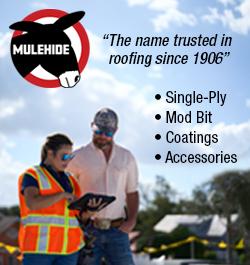
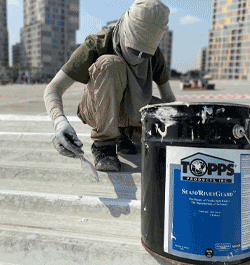







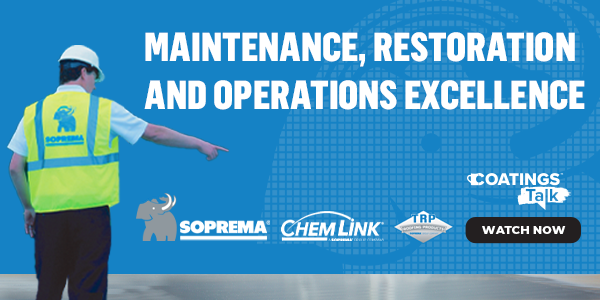
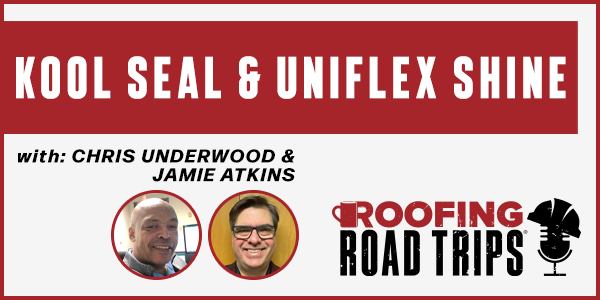
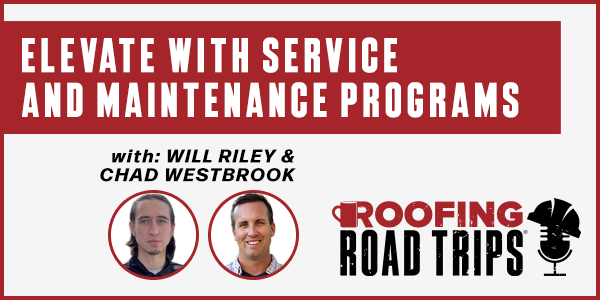





Comments
Leave a Reply
Have an account? Login to leave a comment!
Sign In